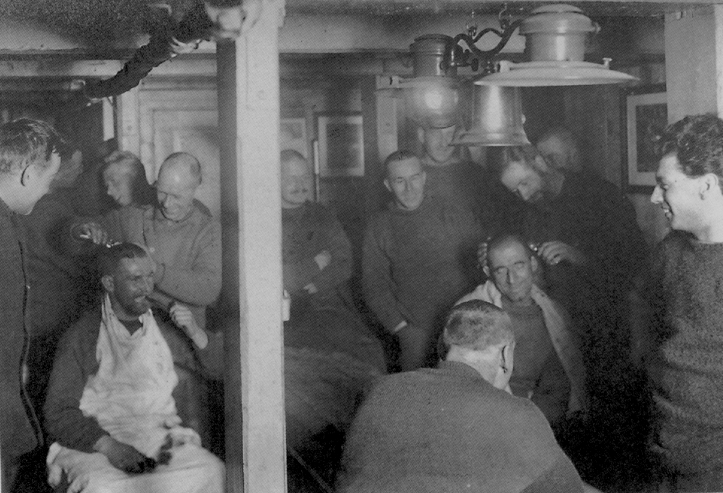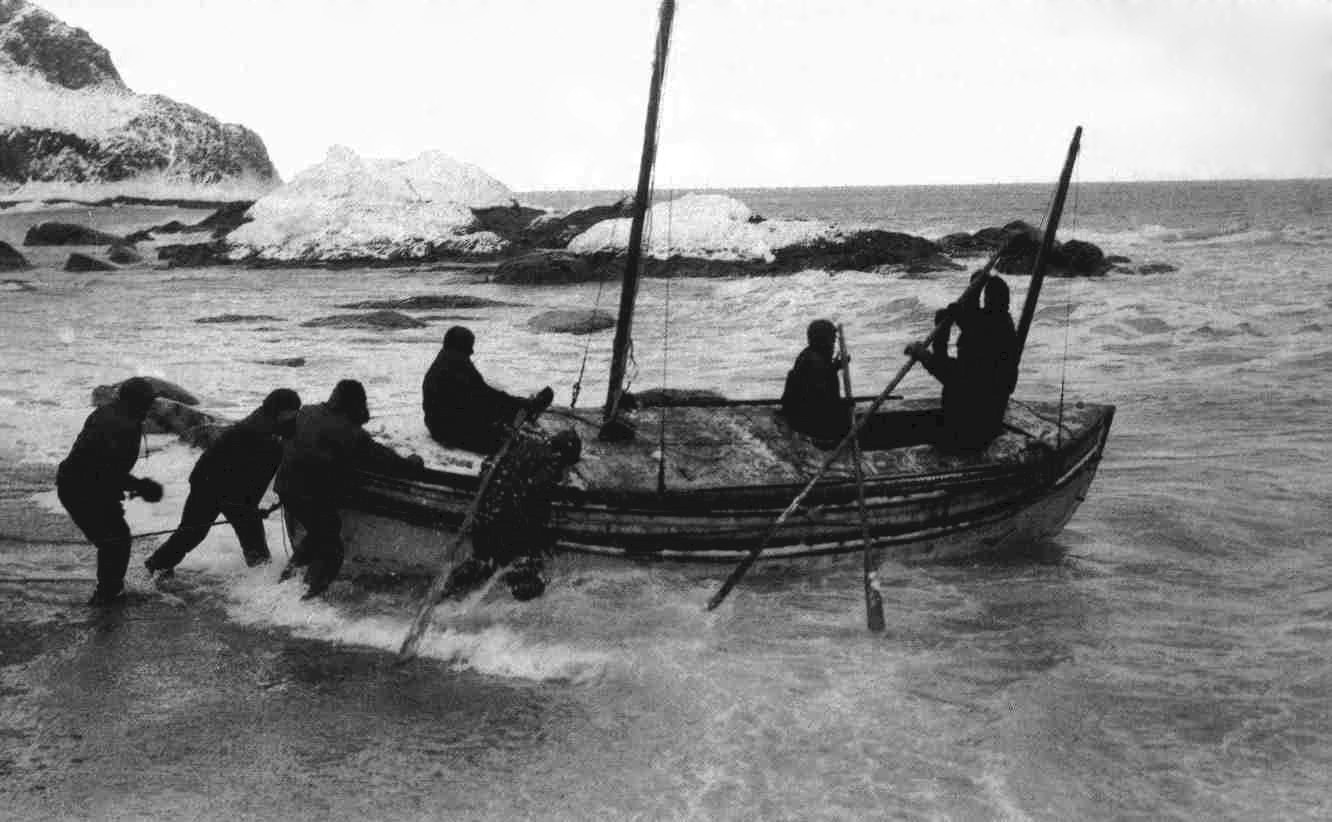|
King Haakon Bay
King Haakon Bay, or King Haakon Sound, is an inlet on the southern coast of the island of South Georgia. The inlet is approximately 13 km (8 miles) long and 4 km (2.5 miles) wide. The inlet was named for King Haakon VII of Norway by Carl Anton Larsen, founder of Grytviken. Queen Maud Bay, named for his queen, is nearby. Shackleton Gap, a mountain pass, connects King Haakon Bay to Possession Bay. Cave Cove, which forms part of the bay, is best known as the landing place of Ernest Shackleton in May 1916 as he sought help for his shipwrecked crew marooned on Elephant Island with the Imperial Trans-Antarctic Expedition. The '' James Caird'' landed in the cove on 10 May 1916, after its tumultuous voyage from Elephant Island. While at Cave Cove, the men fed on albatross. Henry McNeish wrote: "We have not been as comfortable for the last five weeks, We had 3 young & 1 old albatross for lunch with 1 pint of gravy which beets icall the chicken soup I ever tasted." Since ... [...More Info...] [...Related Items...] OR: [Wikipedia] [Google] [Baidu] |
Scotia Sea
The Scotia Sea is a sea located at the northern edge of the Southern Ocean at its boundary with the South Atlantic Ocean. It is bounded on the west by the Drake Passage and on the north, east, and south by the Scotia Arc, an undersea ridge and island arc system supporting various islands. The sea sits atop the Scotia Plate. It is named after the expedition ship ''Scotia''. Many icebergs melt there. Location and description The Scotia Sea is the area of water between the Drake Passage, Tierra del Fuego, South Georgia, the South Sandwich Islands, the South Orkney Islands, and the Antarctic Peninsula. These island groups all sit atop the Scotia Arc, which frames the sea on the north, east, and south. The Scotia Sea covers an area around . About half of the sea stands above the continental shelf. History The sea was named about 1932 after the ''Scotia'', the expedition ship used in these waters by the Scottish National Antarctic Expedition (1902–04) under William S. Bruce. The ... [...More Info...] [...Related Items...] OR: [Wikipedia] [Google] [Baidu] |
Albatross
Albatrosses, of the biological family Diomedeidae, are large seabirds related to the procellariids, storm petrels, and diving petrels in the order Procellariiformes (the tubenoses). They range widely in the Southern Ocean and the North Pacific. They are absent from the North Atlantic, although fossil remains show they once occurred there and occasional vagrants are found. Albatrosses are among the largest of flying birds, and species of the genus ''Diomedea'' (great albatrosses) have the longest wingspans of any extant birds, reaching up to . The albatrosses are usually regarded as falling into four genera, but disagreement exists over the number of species. Albatrosses are highly efficient in the air, using dynamic soaring and slope soaring to cover great distances with little exertion. They feed on squid, fish, and krill by either scavenging, surface seizing, or diving. Albatrosses are colonial, nesting for the most part on remote oceanic islands, often with several spe ... [...More Info...] [...Related Items...] OR: [Wikipedia] [Google] [Baidu] |
List Of Antarctic Field Camps
Many Antarctic research stations support satellite field camps which are, in general, seasonal camps. The type of field camp can vary – some are permanent structures used during the annual Antarctic summer, whereas others are little more than tents used to support short term activities. Field camps are used for many things, from logistics (Sky Blu) to dedicated scientific research (WAIS Divide Field Camp). List of field camps See also *Research stations in Antarctica *Demographics of Antarctica *List of Antarctic expeditions This list of Antarctic expeditions is a chronological list of expeditions involving Antarctica. Although the existence of a southern continent had been hypothesized as early as the writings of Ptolemy in the 1st century AD, the South Pole was no ... * Transport in Antarctica References External links COMNAP Antarctic Facilities() COMNAP Antarctic Facilities Map() Antarctic Digital Database Map ViewerSCAR {{Polar exploration Field ... [...More Info...] [...Related Items...] OR: [Wikipedia] [Google] [Baidu] |
South Georgia Survey
The South Georgia Survey was a series of expeditions to survey and map the island of South Georgia, led by Duncan Carse between 1951 and 1957. Although South Georgia had been commercially exploited as a whaling station during the first half of the 20th century, its interior was generally unknown, and maps were largely based on the original survey by James Cook, who first landed on the island in 1775. The South Georgia Survey was intended to make high-quality modern maps covering the entire island, and took place in four austral summer seasons: 1951–52, 1953–54, 1955–56, and 1956–57. The survey was funded by the Royal Geographical Society, the Falkland Islands Dependencies, Odhams Press, and other private supporters. The War Office and Ministry of Supply provided 250 man-days of cold-weather rations, along with a loan of clothing and sledging equipment. Transportation to and from South Georgia was provided on the ships used to supply the whaling stations and ferry whale o ... [...More Info...] [...Related Items...] OR: [Wikipedia] [Google] [Baidu] |
Henry McNish
Henry McNish (11 September 187424 September 1930), often referred to as Harry McNish or by the nickname Chippy, was the carpenter on Sir Ernest Shackleton's Imperial Trans-Antarctic Expedition of 1914–1917. He was responsible for much of the work that ensured the crew's survival after their ship, the ''Endurance'', was destroyed when it became trapped in pack ice in the Weddell Sea. He modified the small boat, '' James Caird'', that allowed Shackleton and five men (including McNish) to make a voyage of hundreds of miles to fetch help for the rest of the crew. After the expedition he returned to work in the Merchant Navy and eventually emigrated to New Zealand, where he worked on the docks in Wellington until poor health forced his retirement. He died destitute in the Ohiro Benevolent Home in Wellington. Early life Harry "Chippy" McNish was born in 1874 in the former Lyons Lane near the present site of the library in Port Glasgow, Renfrewshire, Scotland. He was part of a l ... [...More Info...] [...Related Items...] OR: [Wikipedia] [Google] [Baidu] |
David Copperfield (novel)
''David Copperfield'' Dickens invented over 14 variations of the title for this work, see is a novel in the bildungsroman genre by Charles Dickens, narrated by the eponymous David Copperfield, detailing his adventures in his journey from infancy to maturity. It was first published as a serial in 1849 and 1850 and as a book in 1850. ''David Copperfield'' is also an autobiographical novel: "a very complicated weaving of truth and invention", with events following Dickens's own life. Of the books he wrote, it was his favourite. Called "the triumph of the art of Dickens", it marks a turning point in his work, separating the novels of youth and those of maturity. At first glance, the work is modelled on 18th-century "personal histories" that were very popular, like Henry Fielding's ''Joseph Andrews'' or '' Tom Jones'', but ''David Copperfield'' is a more carefully structured work. It begins, like other novels by Dickens, with a bleak picture of childhood in Victorian England, f ... [...More Info...] [...Related Items...] OR: [Wikipedia] [Google] [Baidu] |
Charles Dickens
Charles John Huffam Dickens (; 7 February 1812 – 9 June 1870) was an English writer and social critic. He created some of the world's best-known fictional characters and is regarded by many as the greatest novelist of the Victorian era.. His works enjoyed unprecedented popularity during his lifetime and, by the 20th century, critics and scholars had recognised him as a literary genius. His novels and short stories are widely read today. Born in Portsmouth, Dickens left school at the age of 12 to work in a boot-blacking factory when his father was incarcerated in a debtors' prison. After three years he returned to school, before he began his literary career as a journalist. Dickens edited a weekly journal for 20 years, wrote 15 novels, five novellas, hundreds of short stories and non-fiction articles, lectured and performed readings extensively, was an indefatigable letter writer, and campaigned vigorously for children's rights, for education, and for other social ... [...More Info...] [...Related Items...] OR: [Wikipedia] [Google] [Baidu] |
Peggotty
The Peggotty family are fictional characters in Charles Dickens's 1850 novel ''David Copperfield''. Daniel Peggotty Yarmouth fisherman Daniel Peggotty is the brother of Clara. Referred to as "Mr Peggotty", he is a fisherman and dealer in lobsters, crabs, and crawfish. He lives in a converted boat on the beach at Yarmouth with Emily, Ham, and Mrs Gummidge. When Emily abandons them to elope with Steerforth, Daniel vows to find her. Steerforth later leaves Emily and she is re-united with Daniel. At the end of the novel Daniel, Emily, and Mrs Gummidge resettle in Australia. Clara Peggotty Clara Peggotty is usually referred to as simply 'Peggotty' so as not to confuse her with David's mother, who is also called Clara. Peggotty is the housekeeper of the family home and plays a big part in David's upbringing. Peggotty is the sister of Yarmouth fisherman Daniel Peggotty, and the aunt of Ham Peggotty and Little Em'ly.Dickens, Charles 'David Copperfield' Published by Bradbury & Evans (18 ... [...More Info...] [...Related Items...] OR: [Wikipedia] [Google] [Baidu] |
Cliff
In geography and geology, a cliff is an area of rock which has a general angle defined by the vertical, or nearly vertical. Cliffs are formed by the processes of weathering and erosion, with the effect of gravity. Cliffs are common on coasts, in mountainous areas, escarpments and along rivers. Cliffs are usually composed of rock that is resistant to weathering and erosion. The sedimentary rocks that are most likely to form cliffs include sandstone, limestone, chalk, and dolomite. Igneous rocks such as granite and basalt also often form cliffs. An escarpment (or scarp) is a type of cliff formed by the movement of a geologic fault, a landslide, or sometimes by rock slides or falling rocks which change the differential erosion of the rock layers. Most cliffs have some form of scree slope at their base. In arid areas or under high cliffs, they are generally exposed jumbles of fallen rock. In areas of higher moisture, a soil slope may obscure the talus. Many cliffs also fea ... [...More Info...] [...Related Items...] OR: [Wikipedia] [Google] [Baidu] |
Henry McNeish
Henry McNish (11 September 187424 September 1930), often referred to as Harry McNish or by the nickname Chippy, was the carpenter on Sir Ernest Shackleton's Imperial Trans-Antarctic Expedition of 1914–1917. He was responsible for much of the work that ensured the crew's survival after their ship, the ''Endurance'', was destroyed when it became trapped in pack ice in the Weddell Sea. He modified the small boat, '' James Caird'', that allowed Shackleton and five men (including McNish) to make a voyage of hundreds of miles to fetch help for the rest of the crew. After the expedition he returned to work in the Merchant Navy and eventually emigrated to New Zealand, where he worked on the docks in Wellington until poor health forced his retirement. He died destitute in the Ohiro Benevolent Home in Wellington. Early life Harry "Chippy" McNish was born in 1874 in the former Lyons Lane near the present site of the library in Port Glasgow, Renfrewshire, Scotland. He was part of a ... [...More Info...] [...Related Items...] OR: [Wikipedia] [Google] [Baidu] |
James Caird (boat)
The voyage of the ''James Caird'' was a journey of from Elephant Island in the South Shetland Islands through the Southern Ocean to South Georgia, undertaken by Sir Ernest Shackleton and five companions to obtain rescue for the main body of the stranded Imperial Trans-Antarctic Expedition of 1914–1917. Historians regard the voyage of the crew in a ship's boat through the " Furious Fifties" as one of the greatest small-boat journeys ever completed. In October 1915, pack ice in the Weddell Sea had sunk the main expedition ship ''Endurance'', leaving Shackleton and his 27 companions adrift on a floe. They drifted northward until April 1916, when the floe on which they were camped broke up; they made their way in the ship's boats to Elephant Island. Shackleton decided to sail one of the boats with a small crew to South Georgia to seek help. It was not the closest human settlement but the only one that did not require them to sail into the prevailing westerlies. Of the three ... [...More Info...] [...Related Items...] OR: [Wikipedia] [Google] [Baidu] |








